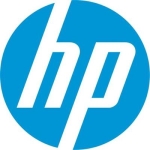At FileVine, we provide case management software for attorneys, so we have considerable SOC 2 compliance requirements. We need more than a firewall; we also need a solution that helps us upkeep and manage devices, laptops, etc. 365 Defender fulfills these requirements, and SOC 2 compliance is our primary use case.
We're a hybrid company using both Macs and Dells, deployed across multiple regions.
The solution helps us improve compliance regarding end users installing updates. It clarifies which users need to update and how they can go into Terminal or PowerShell to perform that process. We don't have to waste time looking for what needs to be done, which is a useful functionality. The product automatically informs us of high and low priorities, which is great; it allows us to deal with the most significant priorities first.
365 Defender helps us automate routine tasks, and we get updated daily. We can integrate Splunk to see what's going on and what needs to be updated. Automation significantly impacts our security operations; it feels like we have a vault around us that nobody can breach.
The Endpoint Manager is incredible; it has a very straightforward interface and is exceedingly easy to use. Pulling out and deploying different tags or resources is a simple task across various departments with different levels of security. The notifications are also simple and satisfying; it's great to see the bubble informing us which devices are compliant and which are waiting to update.
The visibility into threats provided by the solution is excellent. When a threat triggers a response based on our set rules, it's stopped, and we are notified via email. We can then analyze the threat and make a decision; this entire process is straightforward and user-friendly.
The product helps us prioritize threats across the enterprise, especially in the legal domain. It is very valuable, and one of the reasons we have been so successful at Filevine is the security measures we have in place. We use many tools, one of them being Microsoft 365 Defender, which significantly contributes to our IT team and company's success.
Our integration of multiple solutions helps to deliver a coordinated detection and response in our environment. We integrate with Zscalar, which is very easy and manageable. We thought it might be difficult, but it works very well. Much like a car, our security system is composed of many moving parts working together, which helps us move forwards as a company and thrive in a relatively challenging economic time.
The comprehensiveness of the threat protection provided by using multiple Microsoft security products is excellent. It's a simple system; we have incoming and outgoing traffic rules. When a rule is triggered, we are notified by email to look over the situation. For example, we can see viruses and malicious actors attempting to breach our security and respond by blacklisting the IP address. Sometimes, we gather information and pass it on to the FBI, as we have many SOC 2 clients.
365 Defender helped eliminate multiple dashboards, which is great because I like to be as minimalistic as possible regarding dashboards. Now, I only have to look at one or two at most, simplifying the security landscape, and I love that about the tool.
The solution's threat intelligence helps us prepare for potential threats before they hit; most recently, we were protected from the August 2022 Apple hack. We had measures in place, so none of our devices were affected. We were spared any data compromise, and it's an excellent example of why we invest in security solutions. It builds our confidence and strengthens our case with the higher-ups for increasing and maintaining our cybersecurity budget.
The product certainly saves us time. We trust in the protection and can focus on different projects, including automation, so we don't have to spend time dealing with issues and security breaches. I'd say we save four or five hours a week.
365 Defender saves us a lot of money because we don't have to recover data or hire outside lawyers to help us with legal trouble. We don't need to invest in physical products or external security teams and solutions. We can keep our security operation within the company, so all our money is invested in people who care about our product and business.
The solution quickly notifies us when a threat is detected, increasing our response speed. Other products I used in the past sometimes had significant delays with notifications, which is far from ideal when dealing with potential security threats.
Correctly updated records are the most significant area for improvement. There have been times when we were notified of a required fix; we would carry out the fix and confirm it but still get the same notification a week later. This seems to be a delay in records being updated and leads to false reporting, which is something that needs to be fixed.
I have been using the solution for a few years.
The solution is very stable with low latency.
The product is highly scalable, which is fantastic because we have been expanding significantly. It's up and running and good to go very quickly, which has been excellent for our expansion in Florida, New York, Maine, and Canada.
I have yet to contact support. One thing that helps in this regard is that I have an AZ-900 handbook with Microsoft fundamentals.
365 Defender was already in place when I was brought into the company, but they previously used Jamf Protect. They switched because it cost too much and wasn't fulfilling the requirements. It didn't perform as well as 365.
I can't speak to the setup as the solution was in place when I arrived at the company. However, 365 Defender is one of the most lightweight tools we use in terms of maintenance. We keep it up to date, and it works very well.
I would say the solution gives us a significant ROI, especially considering the issues in the industry recently. Russia and China hacked many companies, but we never had that problem, and that's a lot of money saved for us. That's not entirely because of 365 Defender, but also thanks to our excellent security team and the robust toolset at our disposal to protect our operation.
The solution is affordable, and we haven't been hit with any hidden costs. The subscription model is straightforward, and it's easy to understand how much additional features cost. If we need to cancel a license or feature, we do that well in advance to avoid being charged for it, but overall, the pricing and licensing are simple and easy.
I would rate the solution an eight out of ten.
We use multiple Microsoft security products, including Defender for Endpoint, MFA as a standard on all work laptops and computers, and Endpoint Manager. We use additional tools to protect the Mac side of our operation. We use Microsoft Intune, some other MDMs, and some other assets from Defender for Cloud, and for cloud security, we use GCP, Azure, and AWS.
Many of these products are integrated, and the integration was relatively straightforward. It was somewhat time-consuming as we previously used Jamf Protect for a long time, so switching our entire infrastructure over to the new products took some time.
















